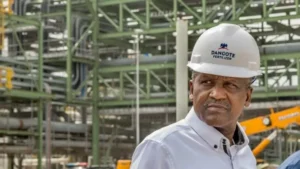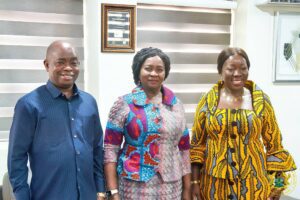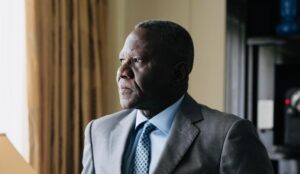
Chapter 1: The Visionary’s Beginning
In the bustling city of Nairobi, Kenya, a young entrepreneur named Kofi Adeyemi sat in his modest office, staring at the whiteboard filled with scribbles and diagrams. His company, TeknoWave, was at a critical juncture. Founded three years ago, the tech startup had grown rapidly, but now it faced stagnation. Kofi knew that to break through this plateau, he needed to foster a culture of creativity within his team. The problem was, he didn’t know where to start.
Kofi was a natural leader, known for his charisma and determination. However, he realized that leadership wasn’t just about directing people; it was about inspiring them to think differently. He thought back to his days at university, where his professor once said, “Innovation isn’t just about new ideas; it’s about creating an environment where those ideas can thrive.” Kofi knew that the future of TeknoWave depended on his ability to turn those words into reality.
Chapter 2: Building the Foundation
Kofi decided to take a step back and analyze the company’s culture. He noticed that while his team was talented, they were often hesitant to voice unconventional ideas. The company’s hierarchical structure made it difficult for junior employees to challenge the status quo. Kofi knew this had to change.
He called a meeting with his leadership team, which included Amara, the head of operations, and Jabari, the chief technology officer. “We need to rethink how we approach innovation,” Kofi began. “Our current structure is stifling creativity. We need to create an environment where everyone feels empowered to contribute, regardless of their position.”
Amara, who was known for her efficiency, looked skeptical. “But Kofi, if we dismantle the hierarchy, won’t we lose control over the processes?”
Kofi smiled. “It’s not about losing control; it’s about guiding creativity. We need to trust our team. They have ideas that could revolutionize our products, but we need to give them the freedom to explore those ideas.”
Jabari, who had always been an advocate for creative problem-solving, nodded in agreement. “I think Kofi’s right. We need to foster an open environment where everyone feels their voice matters.”
Chapter 3: The Creative Space
To put his vision into action, Kofi decided to introduce a new initiative called “Creative Fridays.” Every Friday afternoon, the entire team would set aside their regular tasks to brainstorm, experiment, and explore new ideas. There would be no rigid agenda, and everyone would be encouraged to think outside the box.
The first Creative Friday was met with mixed reactions. Some employees were excited, while others were unsure how to approach this unstructured time. Kofi, Amara, and Jabari walked around the office, encouraging people to share their thoughts.
In one corner, Amina, a software developer from Tanzania, was discussing a new app concept with Olu, a UI/UX designer from Nigeria. Amina had an idea for a feature that would use augmented reality to enhance the user experience, but she wasn’t sure if it was feasible. Olu, with his expertise in user interface design, saw the potential and began sketching out ideas.
As Kofi watched the two collaborate, he realized that this was exactly what he had hoped for. The barriers between departments were breaking down, and new ideas were beginning to take shape. By the end of the day, the office was buzzing with energy, and Kofi knew they were on the right track.
Chapter 4: The Roadblocks
However, fostering creativity wasn’t without its challenges. As the weeks went by, Kofi noticed that while some employees thrived in the new environment, others struggled. Some were uncomfortable with the lack of structure, while others found it difficult to balance their regular tasks with the creative sessions.
One afternoon, Kofi called a meeting with Amara and Jabari to discuss the issue. “I’ve noticed that some people are having trouble adapting to Creative Fridays,” Kofi said. “We need to find a way to support them without stifling the creativity of those who are thriving.”
Amara, who had been observing the situation closely, suggested implementing a mentorship program. “We could pair up employees who are more comfortable with creative thinking with those who are struggling. The mentors can guide them through the process and help them find their footing.”
Jabari agreed. “We also need to make it clear that Creative Fridays aren’t about producing results immediately. It’s about exploration. If people feel pressured to deliver something concrete every week, it will defeat the purpose.”
Kofi liked the idea and decided to implement the mentorship program. He also made it a point to regularly communicate the purpose of Creative Fridays to the team, emphasizing that the goal was to foster a culture of creativity, not to add more pressure.
Chapter 5: The Breakthrough
Months passed, and the changes at TeknoWave began to bear fruit. The company was no longer stagnant; new ideas were flowing, and the team was more engaged than ever. One of the most significant breakthroughs came from an unlikely source: Nia, an intern from Ghana who had joined the company only a few months earlier.
Nia had been working on a side project during Creative Fridays, developing an algorithm that could predict user behavior based on data patterns. She presented her idea to the team during one of the brainstorming sessions, and it quickly caught the attention of Jabari.
“This could be a game-changer for our platform,” Jabari said, impressed by the depth of Nia’s work. “If we can implement this algorithm, we can personalize the user experience in ways we never thought possible.”
Kofi was thrilled. Nia’s idea was exactly the kind of innovation he had hoped to inspire when he introduced Creative Fridays. It was a reminder that great ideas could come from anyone, regardless of their position within the company.
Chapter 6: Expanding the Vision
Encouraged by the success of Creative Fridays, Kofi decided to take things a step further. He wanted to expand the culture of creativity beyond TeknoWave’s Nairobi office and into their other branches across Africa. The company had recently opened offices in Accra, Ghana, and Johannesburg, South Africa, and Kofi knew that the same principles of leadership and innovation needed to be applied there as well.
Kofi traveled to the Accra office first, where he met with the local team, including Kwame, the branch manager. “I want to introduce Creative Fridays here as well,” Kofi explained. “But I also want to adapt the initiative to fit the unique culture of each office. What works in Nairobi might need to be adjusted here.”
Kwame appreciated Kofi’s approach. “I think it’s a great idea,” he said. “But we need to consider the different dynamics here. For example, some of our team members are more comfortable with structured brainstorming sessions. Maybe we could start with that and gradually introduce more open-ended creativity.”
Kofi agreed, and they worked together to tailor the initiative to fit the needs of the Accra team. Similar adjustments were made when Kofi visited the Johannesburg office, where he collaborated with Zola, the branch manager, to integrate local cultural elements into the creative process.
Chapter 7: The Legacy of Innovation
As TeknoWave continued to grow, the culture of creativity that Kofi had nurtured became a defining feature of the company. Employees were more engaged, innovation was at the forefront of everything they did, and the company’s products were gaining recognition across the continent.
Kofi knew that fostering creativity wasn’t a one-time effort; it was an ongoing process. He continued to lead by example, encouraging his team to challenge the status quo and explore new ideas. He also made sure to celebrate the successes that came from their creative efforts, recognizing that each breakthrough, no matter how small, was a step forward.
In the end, Kofi’s leadership wasn’t just about driving the company’s success; it was about creating a lasting legacy of innovation. By empowering his team to think creatively and take risks, he had laid the foundation for a company that could adapt and thrive in a constantly changing world.
And so, as the sun set over Nairobi, casting a golden hue over the city, Kofi looked out from his office window, filled with pride for what his team had accomplished. He knew that the journey was far from over, but with the culture of creativity firmly in place, TeknoWave was ready to face whatever challenges the future might bring.








